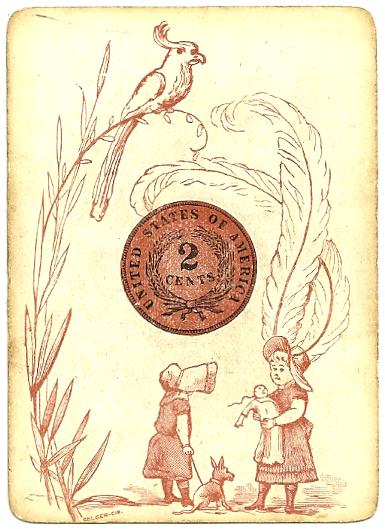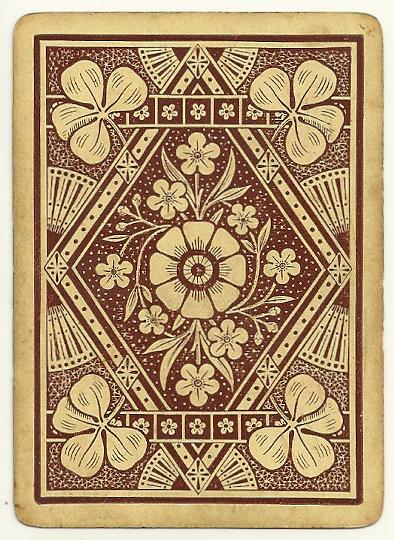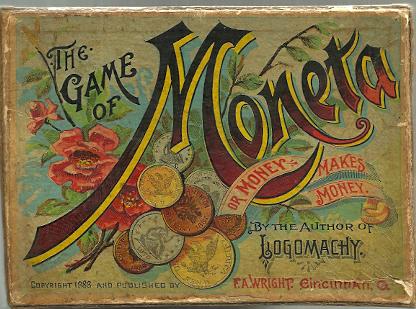“The Game of Moneta, or Money Makes Money,” was published in 1888 by F. A. Wright. Each card shows a coin; the denominations are: 1¢, 2¢, 3¢, 5¢, 10¢, 20¢, 25¢, 50¢, $1 (silver), $1 (gold), $2½, $3, $5, and $10. We certainly had more elaborate currency back then. The object of the game is to make as much money as possible by complicated rules, which I suppose prepares children for adult life.
The backs and box are fine examples of Victorian design (actually, since it’s American, I should probably call it Clevelandian).
(Posted by Doug Skinner)




7 responses so far ↓
1 Lisa // Jan 4, 2013 at 2:45 pm
Wow. Both beautiful and educational. Beauducational.
2 Lisa // Jan 4, 2013 at 2:46 pm
I wonder what “Logomachy” is like!
3 Doug // Jan 4, 2013 at 2:54 pm
Logomachy was kind of like Scrabble: each card had a letter, and you built words, with extra points for the hard letters. Each card also had a pretty picture, of course!
4 Win // Jan 6, 2013 at 1:59 am
This morning, a friend visiting from Germany described a very funny screenplay she has written in which, among many other episodes, two adult sisters remember how they were introduced to the concept of money by having to play the parts of losing bettors to their father’s banker in a game of table roulette in the early 1970s. How apt then to find this game here this evening.
Apparently the word Moneta was an epithet associated with the goddess Juno, the Romans’ name for the Greek goddess Hera, and derives from monere, to advise or to warn. It’s also associated with the goddess of memory, Mnemosyne. Coins like the silver Denarius were minted in Juno’s temples. Grover Cleveland, a fan of gold, would probably have closed them down.
5 mamie // Jan 6, 2013 at 2:56 am
Truly lovely graphics!
6 mamie // Jan 8, 2013 at 12:42 am
The cover reminds me of fileteado from Argentina.
7 Doug // Jan 8, 2013 at 1:08 pm
It does! You are so right!